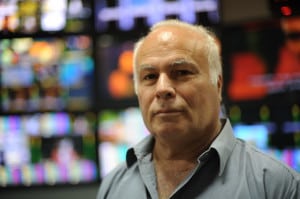Latest News
[Via Satellite 01-12-2015] SatLink Communications, a global provider of satellite solutions for broadcasting and telecommunications services, is making a shift from being primarily focused on satellite-oriented services to including complete content management services. The change is inspired by new demands from broadcasters, as well as an influx of non-traditional customers that previously did not look to satellite, David Hochner, CEO of SatLink Communications, told Via Satellite.
“The core business of SatLink was satellite contribution and distribution. It is now dealing with all aspects of the content and the data, meaning what used to be the added value to support the core satellite business became the value,” he explained. “Entering into transcoding services, localization services, subtitling services, aggregation for [Over The Top] OTT and [Internet Protocol Television] IPTV operators — which in the past used to be added value or outsourcing services — this is the big change of what we are doing today.”
SatLink Communications has more than 120 Earth stations around the world, and has been investing in its infrastructure over the past 20 years to bring in new media users. As a service provider, Hochner said the company is now providing “more megabits than megahertz,” but added that satellite is still the prime infrastructure SatLink Communications uses. The company’s customers have moved in this direction, and SatLink Communications has moved to pivot with them.
“The nature of clients has expanded. For example, broadcasters that are IP-based became potential clients. Google and others became users of the content management to provide and to support their own application, whether it is occasional use, or a full-time service,” he said.
OTT is relatively new territory for Direct-to-Home (DTH) broadcasting. Dish in particular stood out in 2014, having secured rights with Disney and Scripps, and becoming the first pay-TV operator in the U.S. to incorporate the Netflix app into its Set-Top Box (STB). As OTT continues to grow in popularity, its perception within the satellite industry is also beginning to change.
“Ten years ago, IPTV and OTT certainly were looked at as potential threats to traditional pay-TV, but perhaps the remarkable level of growth in more recent years was not expected, nor was the degree to which OTT is a game changer for traditional models,” Brendan Murray, market analyst at Avascent, told Via Satellite. “It has gone from potential threat to technology one may want to incorporate into their STB just to entice subscribers.”
Hochner said the increase in the number of DTH operators per region has driven the need for localization because of content rights. To stay competitive, the company now supports language and subtitle localization as well as content delivery. This was a driving factor in SatLink Communication’s investment in a Hong Kong Point of Presence in 2014.
“Asia is a two-way investment from our point of view,” said Hochner. “There is content going to Asia, and this we can access and provide satellite contribution over the AsiaSat 5 satellite and others. But we also like to support localized channels which may be based, for example, in Hong Kong, and need to bring some domestic provider in Hong Kong worldwide or to access a domestic satellite in the Asia region.”
Likewise localization has influenced SatLink Communications’ investments in Africa. Last year the company expanded its services across the continent to include worldwide content aggregation, decrypt and encoding to MPEG-4, multiplexing, encryption, satellite uplinking and monitoring return paths. Hochner said these services are increasingly in demand from Africa-based DTH and potential OTT operators as the continent’s broadcast infrastructure evolves.
“Definitely Africa is a localization issue and we are continuing to extend our capabilities for localization. Decisions by countries to move to digital from analog services have definitely helped. The entry of the next generation terrestrial is also helping enable more and more kinds of [Digital Terrestrial Television] DTT and OTT services that help either cellular or DTH operators to provide services,” said Hochner.
In fact, Murray added, programmers across the globe are focusing their investments “less on creating new content and more on addressing the new ways to reach audiences with their current portfolios of programming.” Murray said there is a risk that programmers may see how rapidly distribution technologies are evolving and consider hedging their bets by reducing lease terms, which could then hurt the revenue backlogs of Fixed Satellite Services (FSS) operators. Transponder sales for new channels could also slow with the adoption of OTT and IPTV, though the “steady state” of distributing video by satellite should not being threatened for some time. According to Murray, demand for live programming is best delivered in the point-to-multipoint architecture, keeping satellite as a top choice for broadcasting overall. And, OTT has the potential to open up new doors for Ultra-HD, resulting in benefits to the satellite industry.
“As far as preparing for 4K, OTT could actually help drive the industry and perhaps lead to higher demand for such services via satellite as well. One of the biggest reasons why 4K is slow to expand is the lack of content from programmers. Netflix and Amazon Prime address that by creating original content in Ultra-HD (House of Cards, Alpha House) and distributing it on their own network. This allowed them to get the jump on DTH and cable providers,” Murray said.
Get the latest Via Satellite news!
Subscribe Now